Of the millions of men and women with substance use disorders, many, if not most, see the high financial cost of going to a private or non-profit rehab as a significant barrier to seeking treatment. And for a good reason: On the low side, you might be looking at $6,000 to $10,000 for a 30-day inpatient stay at an addiction recovery center. For outpatient care, a three-month program can cost you as much as $5000 or more, depending on how often you attend.
You would think that state-run drug and alcohol rehabs would emerge as the obvious choice for those in need since they charge little or nothing for services. The problem, however, is that the wait lists to get into these facilities are long, and treatment options are limited by available government funding. In addition, as state institutions, you probably won’t get the faith-based therapy support you want.
As a result, an overwhelming number of those steeped in addiction either do nothing and continue to languish, or they try to recover on their own by joining local Alcoholics Anonymous, Narcotics Anonymous, or other support groups. As good as these programs are, they work best when coupled with the clinical therapy modalities and structure you can only find in a substance abuse facility. Without this added support, addicts often end up suffering relapse after relapse.
There’s a better way.

(Karolina Grabowska/Pexels)
Government and Religion Partnerships
The Substance Abuse and Mental Health Services Administration (SAMHSA) has worked alongside faith communities since 1992. That’s because religious congregations provide a tremendous framework in which recovering addicts can thrive.
Today, SAMHSA supports more than 800 faith-based and community groups through its Faith-Based and Community Initiatives project. These initiatives include helping train congregational leaders as peer support specialists, providing marketing materials for prevention campaigns, and funding religiously affiliated addiction and mental health treatment programs through block grants.
In the fiscal year 2022, Utah received more than $23 million from the federal government via SAMHSA Substance Abuse Prevention and Treatment Block Grants. Breaking down the barriers between faith-based and secular addiction prevention and treatment providers can also open up more funding options to individuals.
Private Rehab Scholarships and Grants
A great way to help finance recovery is to go through charities tied to communities of faith as well as the recovery facility you’re considering. Many Salvation Army centers offer no-fee drug and alcohol treatment in return for work. Participants agree to work some 8-hour days while attending rehab, thus getting the treatment they need while acquiring valuable employment skills they’ll use in recovery.
Some Faith-based recovery programs in Utah and elsewhere also offer scholarships to help cover the cost of treatment, depending on the amount of funding available. One of the critical questions you should ask when looking for a drug or alcohol rehab is whether they offer grant or scholarship assistance and how to apply for that right away.
Another example of faith-based funding is Catholic Charities. CC runs its own Christian-based treatment centers nationwide and offers payment options on a sliding scale for those in need. They also accept Medicaid, VA (Veterans Administration) benefits, and private insurance, vowing they won’t turn anyone away for being unable to pay.
Insurance Support
If you are employed full-time, you may have access to health insurance. If not, you can receive addiction recovery support from Medicaid or through an Affordable Care Act (ACA) exchange at a significantly reduced rate. The ACA prohibits discrimination for pre-existing illnesses such as Substance Use Disorder (SUD), so you can’t be denied insurance for an addiction.
Many programs also allow you to take out a specialized loan or create a long-term payment plan for treatment. “As a faith-based drug rehab, we don’t believe anyone should be kept from receiving the quality treatment they desire because they can’t afford it,” said Preston Dixon, COO at Renaissance Ranch. “We work with our clients to create the best possible payment plan for them using their insurance coverage and other resources at our disposal. Their focus should be on recovery, not cost.”
Family, Friends, and Congregation
Your family and friends likely are justified in not wanting to give you money. They have done it before, and you probably used that funding to feed your addiction. So, the good idea is to show them your plan before you ask for their assistance.
Introduce them to the facility you’re considering and have them talk to some of the staff or admissions counselors. Invite them to participate if the center has a co-occurring family training and support group. This lets them know you are serious about recovery and that you need and want their assistance.
If you belong to a congregation, you might speak with your ecclesiastical leader about asking fellow parishioners to help out financially or in other ways. For example, members of the Church of Jesus Christ of Latter-day Saints can work with their congregational leader or bishop to have the church pay for part or all of the treatment at an accredited facility. The church also facilitates free addiction support groups patterned after the 12-Step program used by AA and NA.
Most substance abuse facilities will work with you regarding the financials, but you’ll probably end up paying for some part of your treatment yourself, whether through work or funding. That’s not necessarily a bad thing. It means you are making sacrifices now to secure a future without substance abuse. And that’s the best possible investment you could ever make.
